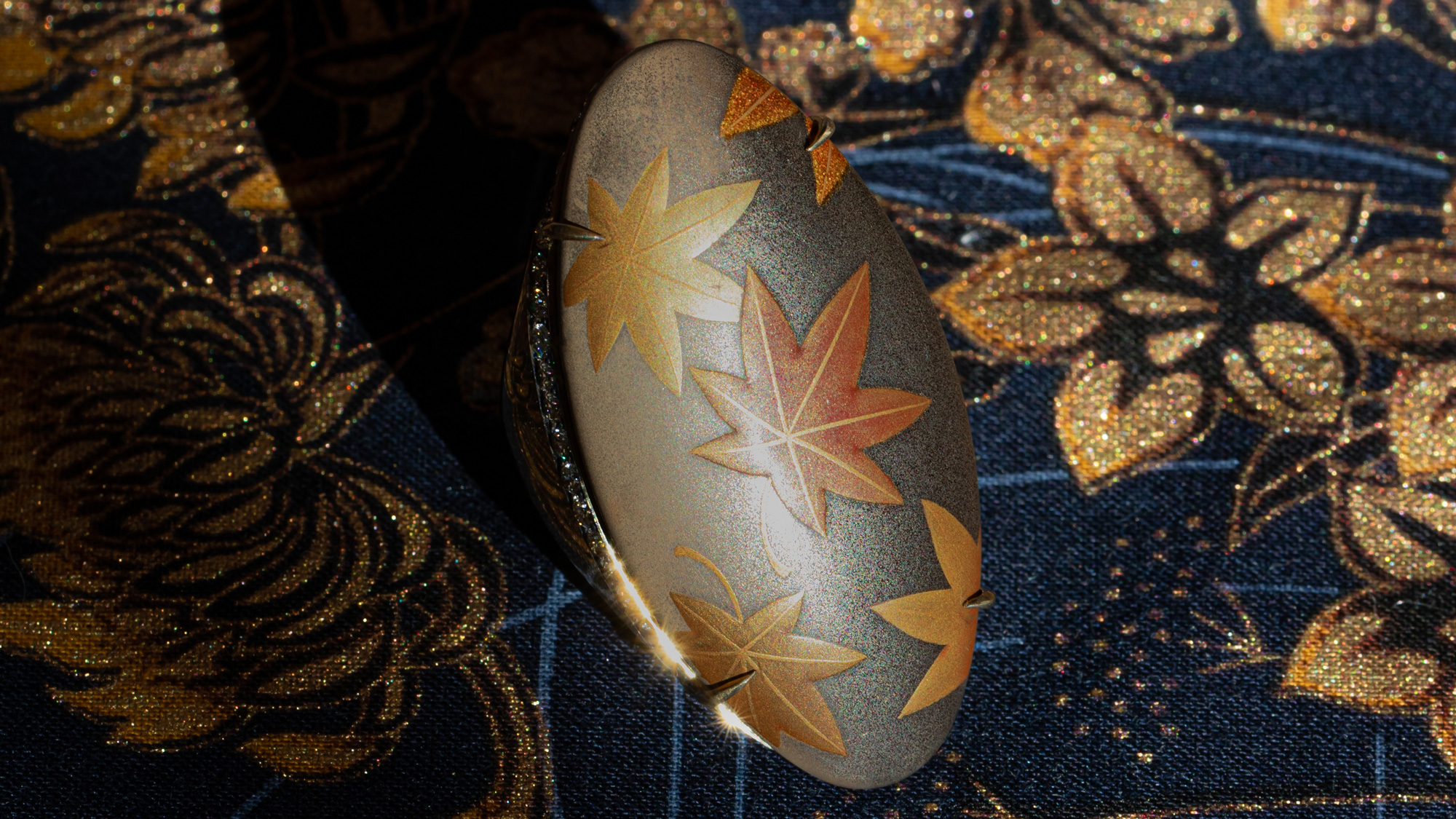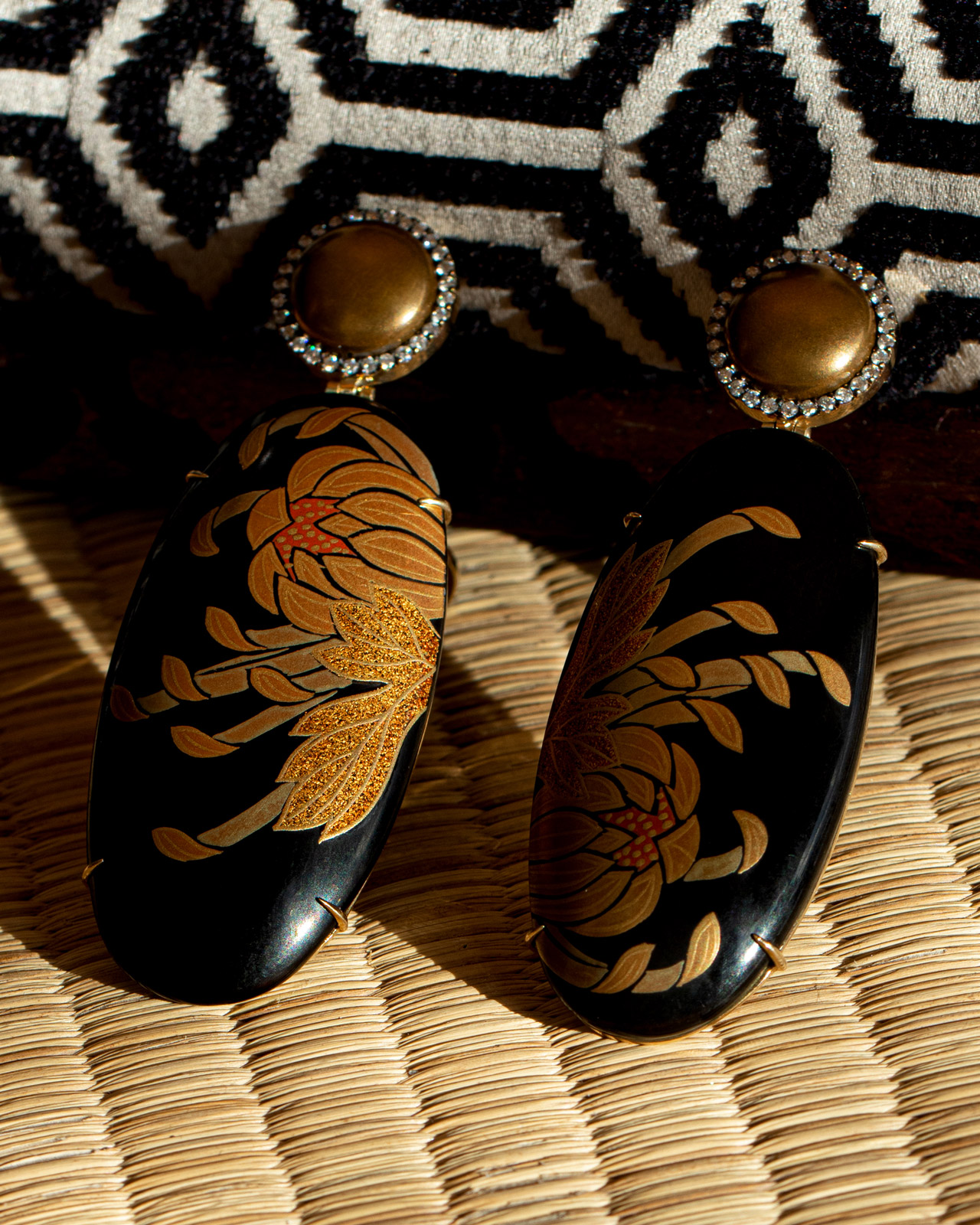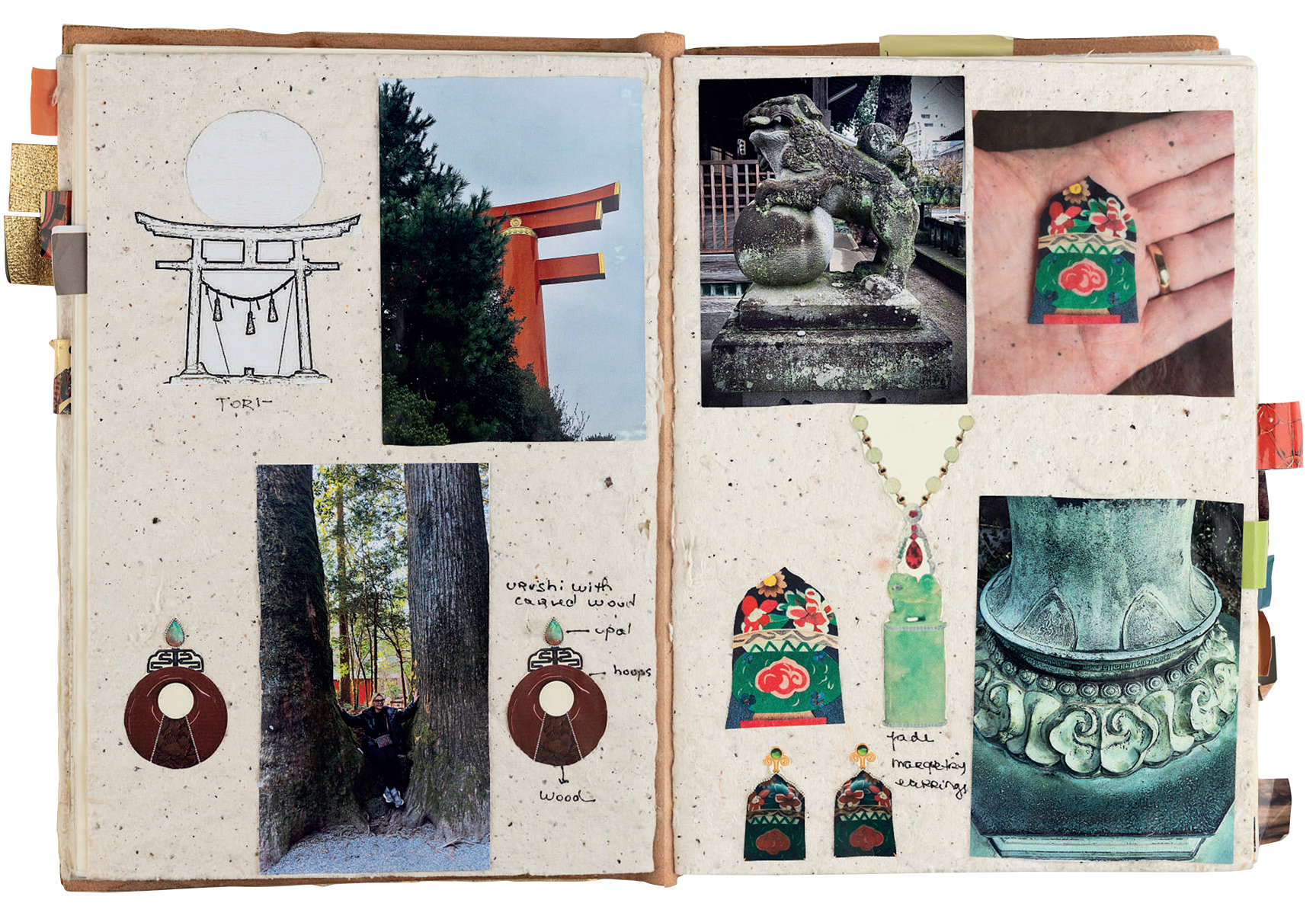PRESS
For all enquiries
press@silviafurmanovich.com

Silvia Furmanovich is pleased to introduce the art of lacquerware applied to jewelry. Practiced for centuries, Japanese lacquer, known as “urushi,” is a traditional and highly revered craft.
Derived from the sap of the urushi tree, natural lacquer is carefully applied in multiple layers to various objects. The process involves skilled artisans meticulously coating the base material with thin layers of lacquer, allowing each layer to dry and harden before applying the next.

This labor-intensive technique creates a lustrous and durable finish that not only enhances the object’s appearance but also provides protection against moisture and wear.
Furmanovich has used lacquer from two different regions in Japan: Wajima and Kamakura. The former originated in Wajima city and for the last 400 years has been highly regarded as one of Japan’s finest lacquerware traditions. The latter dates back to the Kamakura period (1185-1333) and eponymous city in Japan.
The entire process of urushi requires great skill, experience, and attention to detail to achieve the desired result of a beautiful, durable, and long-lasting lacquerware piece.

Silvias’ sketchbook
COLLECTING AND REFINING THE LACQUER
The first step in the urushi process is extracting the lacquer from the urushi tree. The tree’s bark is carefully cut, and the sap that oozes out is collected. The collected sap is then filtered and purified to remove impurities.
PREPARING THE BASE MATERIAL
The object to be lacquered, known as the base material, is selected and prepared. It is usually made of wood, and the surface is meticulously sanded and smoothed to remove any imperfections.
APPLYING THE FOUNDATION LAYERS
The base material is coated with a layer of lacquer called “sabi-urushi” or “kijiro-nuri.” This layer acts as a foundation and helps to seal the wood, prevent warping, and provide a smooth surface for subsequent layers. The layer is applied and allowed to dry. This process may be repeated several times, with each layer being polished and inspected before applying the next.
DECORATIVE TECHNIQUES
Once the foundation layers are complete, various decorative techniques can be applied. One of the foremost decorative techniques is called Maki-e, involving sprinkling or applying gold, silver, or other metal powders onto the partially dried lacquer surface. The powders are then carefully manipulated and arranged using special tools to create intricate designs or patterns.
FINAL LACQUER LAYERS
After the decorative techniques are applied, additional layers of lacquer are built up, each followed by drying and polishing. This process can be repeated multiple times, with the number of layers depending on the desired thickness and finish. Each layer contributes to the durability, depth, and luster of the final lacquerware.
FINISHING TOUCHES
Once the desired number of lacquer layers are applied, the surface is polished and burnished using different materials, such as charcoal or whetstones. This process creates a smooth, glossy finish and enhances the lacquer’s depth and richnessby gluing, sanding and finishing.
With its raw materials of wood and urushi, lacquer is a collaboration of two of blessings of nature. The production process uses almost all natural materials and only a very small amount of energy is required.


Silvia Furmanovich’s minimasterpieces... give refined meaning
to the term ‘wearable art
T: MAGAZINE / THE NEW YORK TIMES STYLE MAGAZINE